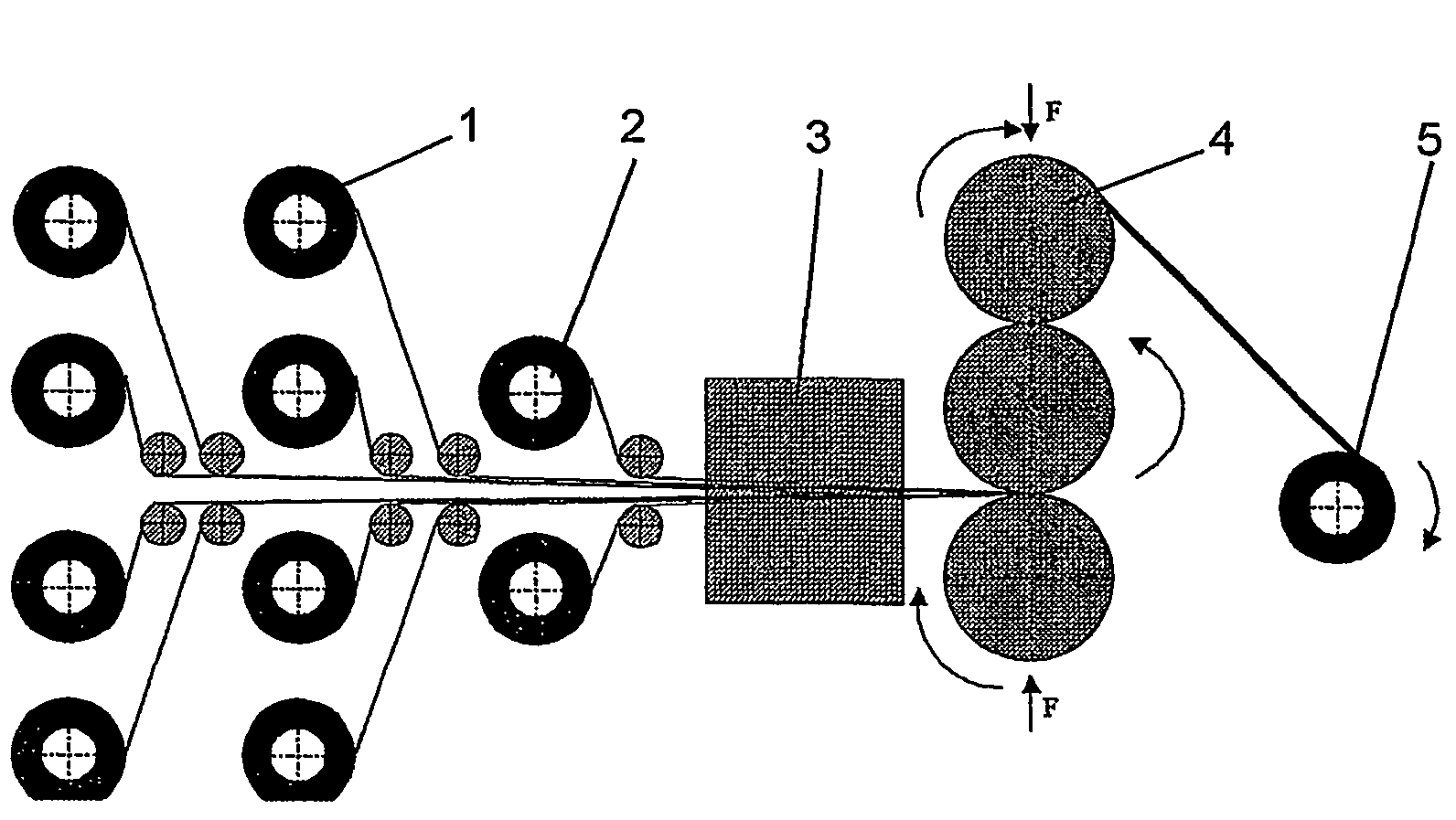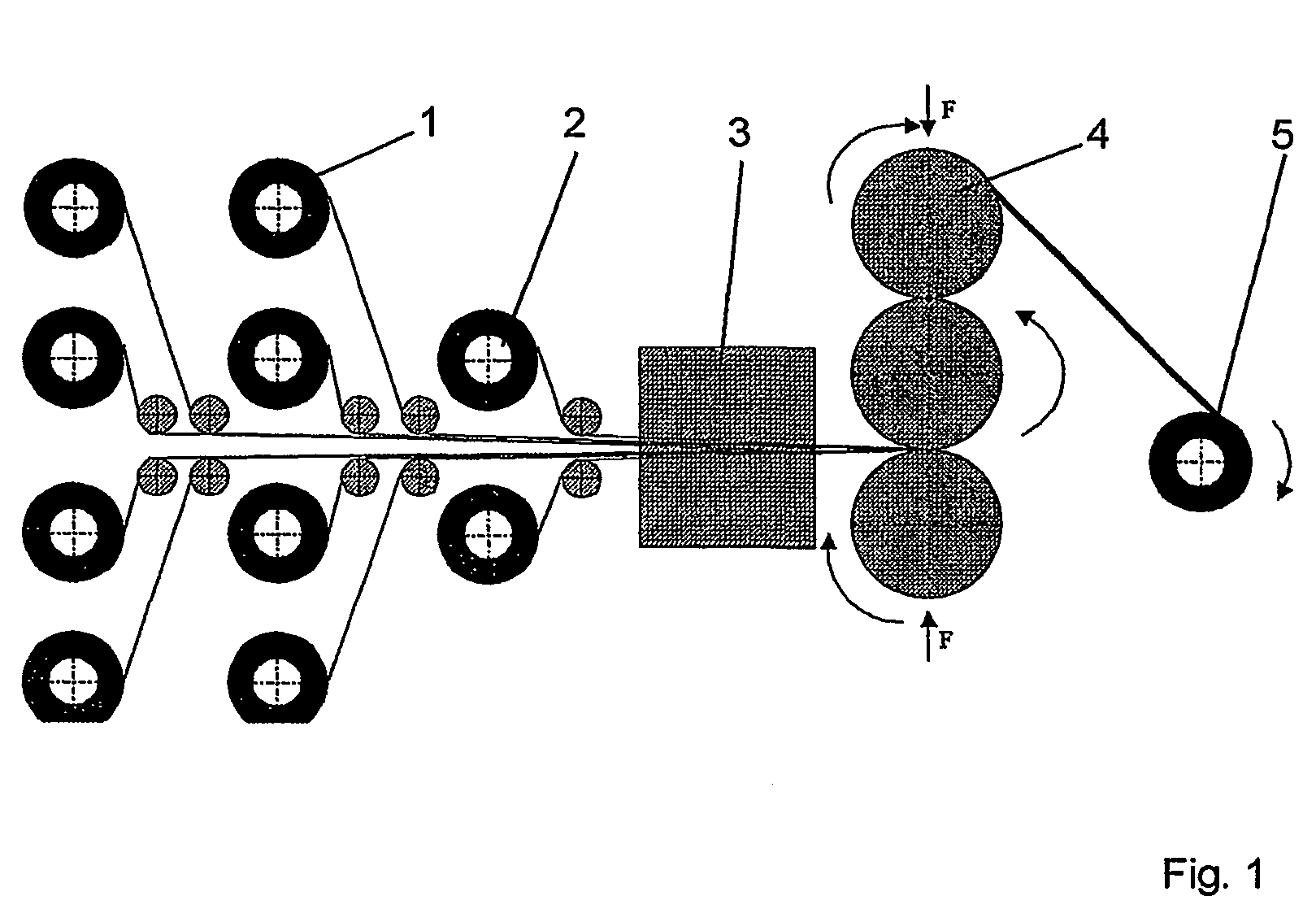Flat packing and method for the production thereof
- Summary
- Abstract
- Description
- Claims
- Application Information
AI Technical Summary
Benefits of technology
Problems solved by technology
Method used
Image
Examples
Embodiment Construction
[0015]The following description of the preferred embodiments is merely exemplary in nature and is in no way intended to limit the invention, its application, or uses.
[0016]The quasi-continuous impregnation of the nonwoven fabric with, for example, a PTFE dispersion containing 50 to 60 wt. % of PTFE, 3 to 5 wt. % of alkylphenol ethoxylate, <0.2 wt. % of ammonium pentadecafluorooctanoate and the remainder demineralized water is carried out by pulling the nonwoven fabric webs automatically through an impregnation bath at a rate of about 0.1-5 m / min. The residence time in the impregnation bath depends on the desired degree of impregnation and on the active agent used. Predominantly used for impregnation are pure aqueous PTFE dispersions or mixtures of aqueous PTFE dispersions with mineral fillers, the mixtures containing as the inorganic filler, for example, up to 50 wt. %, based on the dry weight of PTFE, of graphite, talc, mica or molybdenum sulfide and common dispersing aids. To make...
PUM
| Property | Measurement | Unit |
|---|---|---|
| Length | aaaaa | aaaaa |
| Length | aaaaa | aaaaa |
| Weight | aaaaa | aaaaa |
Abstract
Description
Claims
Application Information
 Login to View More
Login to View More - R&D Engineer
- R&D Manager
- IP Professional
- Industry Leading Data Capabilities
- Powerful AI technology
- Patent DNA Extraction
Browse by: Latest US Patents, China's latest patents, Technical Efficacy Thesaurus, Application Domain, Technology Topic, Popular Technical Reports.
© 2024 PatSnap. All rights reserved.Legal|Privacy policy|Modern Slavery Act Transparency Statement|Sitemap|About US| Contact US: help@patsnap.com









